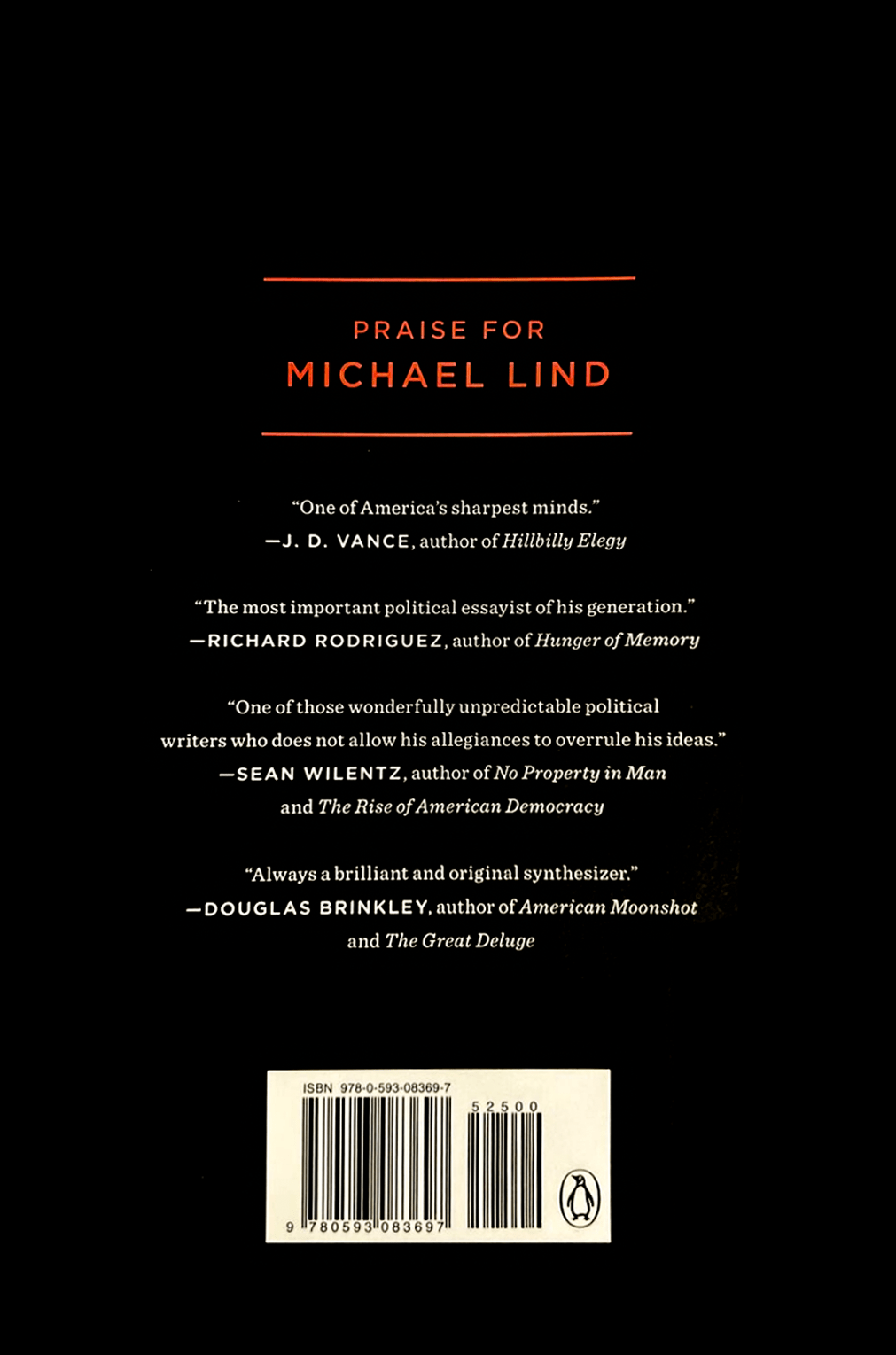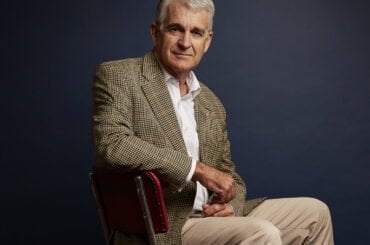In Context
Traditionally the powerful and the weak have been defined economically: the poor were the weak and the rich were the powerful. Over the past forty years the powerful have been redefined as white and male, and the powerless have been defined as all who do not fit those categories – regardless of actual wealth. An upper middle-class gay man or black women, by virtue of their sexuality or race, can claim to experience more oppression and setbacks in life than a working-class or long-term unemployed white man or woman. Connected with this is the rise of neo-liberalism, an ideology that not only wants national economies integrated and unprotected from the global economy, but which is also cosmopolitan in nature, not valuing nation or place, and more recently has adopted woke social justice ideology. Overseeing this identity politics, neo-liberal regime are unelected experts or technocrats, whose power resides not in the dynamics of democracy, but in public bureaucracies, mega-corporations, and the media.
Ordinary citizens – “the heartland” – who are not tertiary educated and not plugged into the metropolitan zones – “the hubs” – where the cosmopolitan technocrats live, increasingly feel powerless and demoralized. In response they have supported populist movements that promise to overthrow the tyranny of experts and usher in a new age of democracy.
This “heartland” reaction was pronounced in 2016 with Brexit in Britain and Trump in the US. According to Lind, the better response to the tyranny of the technocrats is not populism but democratic pluralism, or the reinvigoration of civil society institutions – unions, (popular) political parties, churches – that can restore democracy to society without giving power to potentially dangerous demagogues.
Big Ideas
- The key social division is increasingly between educated, city-dwelling, cosmopolitans and suburban/regional, working-class citizens – hubs v heartlands
- Technocratic liberalism is government by experts in powerful bureaucracies for the sake of causes like climate change, globalization, and woke social justice
- Significant disadvantage nowadays is not so much a result of racism and sexism, but is a result of economic disadvantage
- Democratic pluralism requires a reinvigoration of civil society groups who can hold political parties, bureaucracies, and corporations responsible
The Metropolitan Elite
A major theme of social science during the twentieth century was the rise of an expert class or technocracy that would come to water down democracy. [2-3] This expert class would increasingly take major public policy issues out of the hands of elected representatives and decide them in unelected bureaucracies. Rather than citizens in the more sparsely populated heartlands and suburbs of liberal democracies having an impact on public policy via their representatives, they find themselves increasingly managed by technocrats who dwell in hubs in and close to metropolitan cities. These technocrats and their ideals have also captured the major political parties, giving heartland citizens little actual representation in their nations.
The roughly 10-15% of tertiary-educated hub-dwellers in the average Western democracy own around 50% of the national wealth. [7] Even though having a college degree does lead to upward-social mobility, the high cost of college degrees in the US makes it increasingly difficult for children from working-class families to become upwardly mobile. [8] The other divide occurring in Western democracies is the rise of debt and the decline of outright ownership. Increasingly people are taking out mortgages and loans on houses and cars, which in real terms means that they don’t own these “assets”, but are really renting them, possibly for most of their lives. Other than the very wealthy who can own major assets, the rest of the population either goes into decades of debt or a lifetime of renting with little to pass down to their children.
Lind says “If a united working class voted against the overclass, the latter would lose every election. But national working classes have always been divided in politics by various cleavages – religious, regional, racial, ethnic, and ideological – to the benefit of outnumbered managerial elites.” [10-11] What could unite them? Lind makes a suggestion at the end of the book.
The Neo-Liberal Revolution from Above
The rise of the managerial elite was no conspiracy. The “transfer of power in all three realms of politics, economics, and culture from working-class majorities to the university-credentialed overclass [was] the effect of many simultaneous campaigns…to bring down the whole structure of the post-1945 cross-class settlement….” Its effects were momentous: “When the dust from the collapse cleared, the major institutions which working-class people had found a voice on the basis of numbers – mass-membership parties, legislatures, trade unions, and grassroots religious and civic institutions – had been weakened or destroyed….” [65-66] We should add that post-WWII prosperity and technology led many citizens to turn inwards in their concerns and increasingly lose interest in community organisations and associations. To a large extent, citizens willingly left civil society.
Like some other social observers, Lind speaks of “the current regime of technocratic neoliberalism.”[47] By “neoliberalism” Lind means “a synthesis of free market economic liberalism of the libertarian right and the cultural liberalism of the bohemian/academic left.” Neoliberalism “weakens both nation states and working-class majorities. Its preferred model of government is apolitical, anti-majoritarian, elitist, and technocratic.” [48]
Such technocrats have constructed trade agreements, the most notorious being the North American Free Trade Agreement (NAFTA), which have been to the detriment of the working class, particularly working-class racial minorities. CEOs are part of the elite class, and between 1999 and 2009 US multinational corporations shed 864,600 American workers and employed 2.9 million workers abroad. [56] One study showed that the flood of Chinese imports into America destroyed up to 2.4 million net jobs in manufacturing and related industries between 1999 and 2011. [57]
The neoliberals not only promote economic policies that disadvantage the working class, but their emphasis on high levels of immigration also stand at odds with lower-income earners. Immigration is, according to Lind, one of the central points of contention between the heartland and the hub. High levels of immigration have been used to keep wages low and undermine unions. [153, 159] Although it is true that high immigration can lift a country’s overall GDP, not everyone benefits, especially as low-earning citizens compete for low-earning jobs with recently arrived immigrants, who are willing and able to work for less pay.
Other social and moral issues championed by the neoliberals are also out of step with heartland citizens, who do not share the politically correct and woke values of the hub dwellers that they try to force on everyone else through corporations and cancel culture – what Lind calls “overclass moral imperialism.” [142-3] Thus, “Counter-majoritarian, rights-based liberalism, pushed too far, becomes antidemocratic liberalism.” [62]
The Return of Democratic Pluralism
For Lind there is a cure for the democratic deficit and social polarization brought about by the rise of technocratic managerialism: democratic pluralism. Democratic pluralism seeks to turn the power dynamic upside down, and see power shaped by the majority through their own voluntary, civil society associations. These are especially trade unions, political parties, and churches, or what Lind calls “the guild”, “the ward”, and “the congregation”. This was a fact of Western society up to the 1960s, so it’s not a far-fetched idea.
Lind says, “To this end, substantial areas of policy should be delegated to rule-making institutions, which must represent particular portions of the community, like organized labor and business in wage-setting sectoral bodies, or representatives of religious and secular creeds in bodies charged with oversight of education and the media.” [133] Democratic pluralism sees a country not as a collection of individuals, or as a single mass of people, but as a collection of communities – a middle way between collectivist and individualist accounts of society. [148]
An example of how democratic pluralism can jam the gears of neoliberalism is that in the US only 1 in 10 workers are covered by union contracts, and more than a quarter of workers are in low-pay jobs. In France and Denmark over 80% of workers are unionized, with only 11% and 8% of workers in low-wage jobs respectively. [152]
But can we reasonably hope for a return of democratic pluralism, and what is the mechanism for its return? Lind is blunt: “What would motivate the managerial overclass to abandon technocratic neoliberalism? The answer is fear.” [167] Fear of what, exactly? Two options: fear of an underclass revolution, and fear of a foreign security threat. Lind doesn’t hold much hope for the former, and suggests the most likely scenario to be an external aggressor motivating some among the elites to encourage and join a revived nationalism among the working classes.
Part of this would involve the dismantling of much of the technocratic domination over society to curry favour with the heartland, generating long-term national unity and a commitment to victory. [167-8] In particular this could involve the reassertion of national industry and nation-first economic policy.
Commentary
Lind offers an interesting, albeit sweeping, survey of the rise of managerial elites over the past 100 years. He is one voice among a growing chorus pointing out the progressive weakening of democracy at the hands of the expert class who increasingly decide on issues of national importance – economy, public health, civil rights, environment, education, immigration.
There is a realism throughout the book that stops the argument from becoming Pollyannaish; Lind points out that many historical advocates of democracy would consider modern democracies far too big for democracy to survive in any robust form. We must make the best of our situation. Having said that, Lind’s suggestion that democratic pluralism would have to accommodate not simply atheists but also witches may turn out to be true, but it would also generate its own fierce polarisations that would have nothing to do with economic class. [143]
The New Class War helps us to see that it is economic disadvantage rather than gender and race that holds people back in modern democracies, which is an important point to keep in mind. And while Lind’s alternative – democratic pluralism – needs much elaboration, Lind’s description of it will be helpful for many younger readers who did not live through the 1950s and 1960s; and his explanation for how it might make a comeback is not necessarily implausible. Overall it is an informative book that would be read well along with Salvatore Babones’ The New Authoritarianism and David Goodhart’s The Road to Somewhere.




